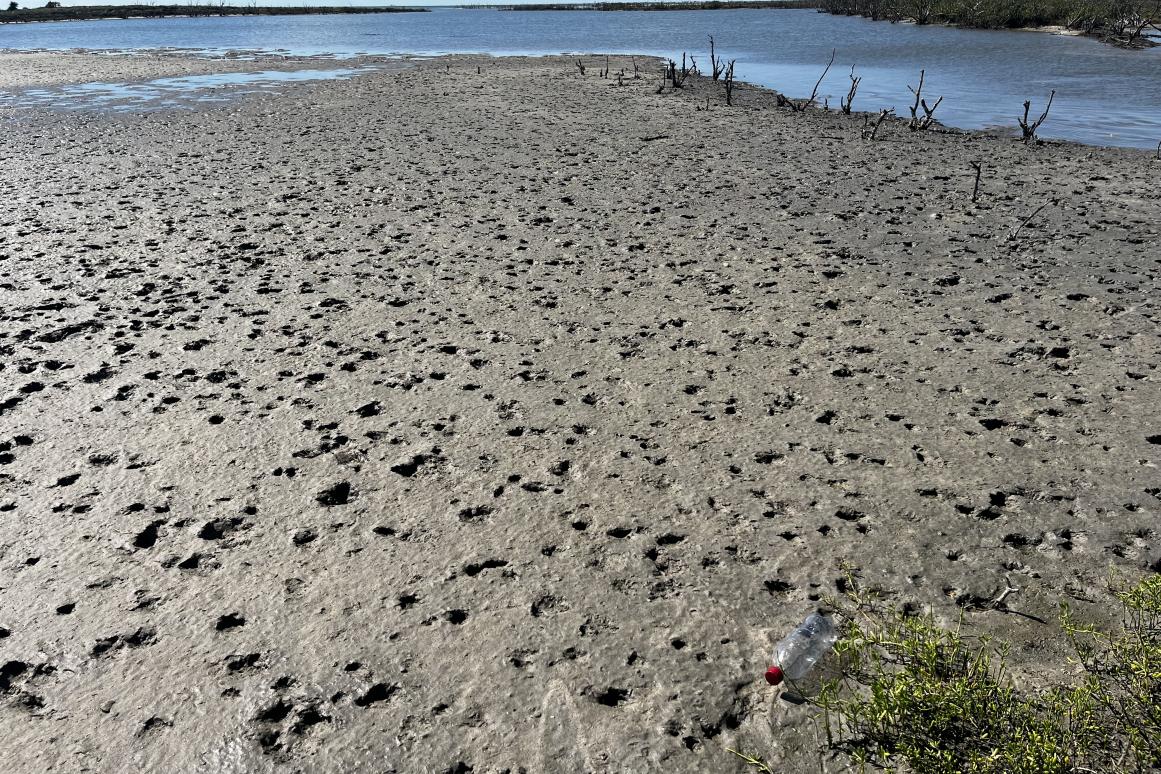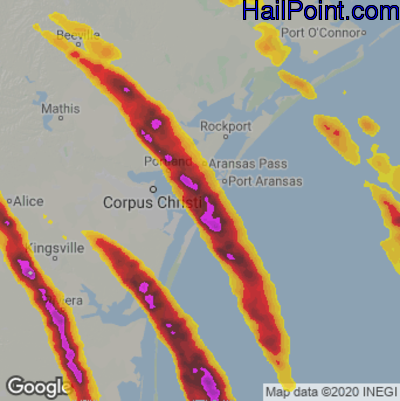HRI Scientists Part of Collaboration to Assess Extent of Bird Mortality Event After Hailstorm in Coastal Bend

CORPUS CHRISTI — The hailstorms that swept through the Corpus Christi and Coastal Bend areas caused property damage that is still being measured, but the rare weather event also took a toll on some coastal bird populations.
Early assessments revealed more than 1,600 brown pelicans, and 400 birds of nine other species, including the threatened reddish egret, red knot and piping plover, were killed or severely injured on rookery islands in Corpus Christi Bay and near Baffin Bay.
The event prompted a collaborative response and research effort among the Harte Research Institute (HRI) at Texas A&M University-Corpus Christi (TAMU-CC), University of Texas-Marine Science Institute Amos Rehabilitation Keep (UTMSI-ARK), Coastal Bend Bays and Estuaries Program (CBBEP), Texas Parks and Wildlife Department (TPWD), and The Nature Conservancy (TNC) to assess the damage caused by the storms.
“Pock marks in the mud left behind by hailstones indicated their size, and photos of mudflats showed roughly a foot between impact marks, meaning medium and large birds had little chance of escaping unscathed,” said Dr. Dale Gawlik, HRI’s James A. “Buddy” Davidson Endowed Chair for Conservation and Biodiversity. “Most management efforts to protect birds focus on minimizing human impacts, such as disturbance or habitat changes, but this is a reminder that birds have to deal with all those human activities and natural events such as hurricanes, floods, droughts, hailstorms and more.”

HRI staff were alerted to the event by fishermen on Monday morning, November 3, and an initial investigation by staff from UTMSI-ARK revealed the pelicans had injuries consistent with hail impacts but that hundreds more birds were dead or severely injured. It is estimated 1,400 birds, mostly brown pelicans, had died and 600 were injured. Rescued birds were taken to the ARK facility in Port Aransas, Texas.
HRI researchers used their expertise with drones to assess the islands and help guide recovery efforts, while visiting all the islands in the storm’s path to understand the extent of the damage.
One storm was measured with a peak wind gust of 69 mph, which is tropical storm force, and with golf-ball sized hail that lasted around 10 minutes. Scientists discovered the storm left behind the largest reported avian mortality event from a hailstorm in North America in decades.
“Because hailstorms are much rarer than rainstorms, climate scientists are less certain of how climate change is affecting the number of hailstorms,” Gawlik said. “However, there is agreement among studies worldwide that human-caused climate change is allowing for larger hail. This really matters to birds because had the hail been the size of a pea we would not have seen the kind of injuries these birds suffered.”
A full assessment should be available in a few weeks as researchers are working to gather more information on the event.
